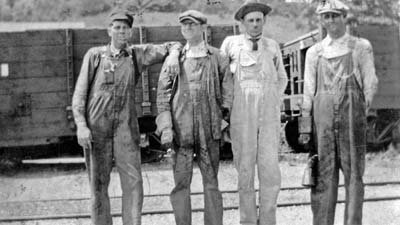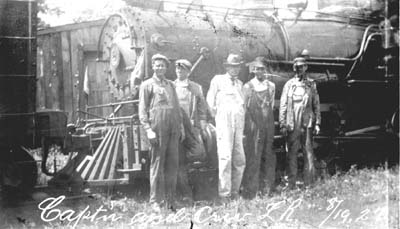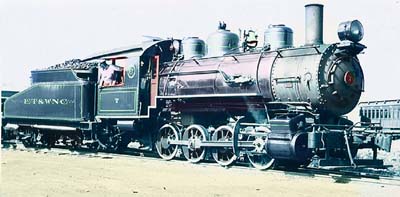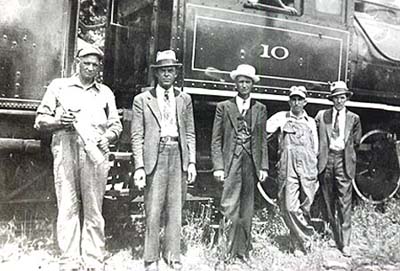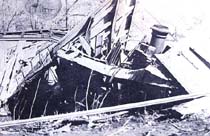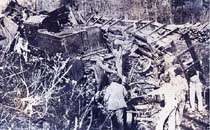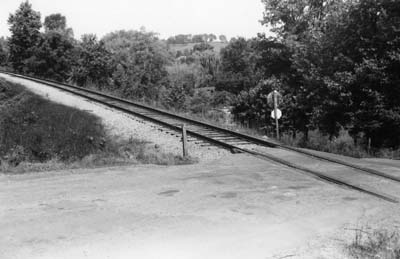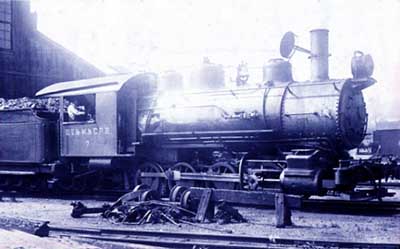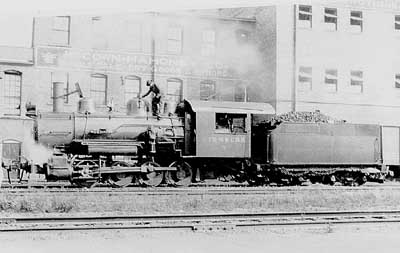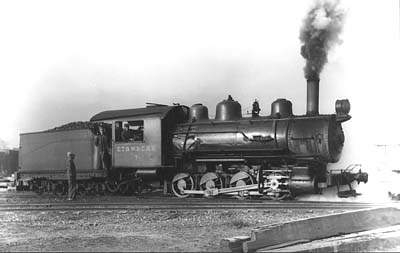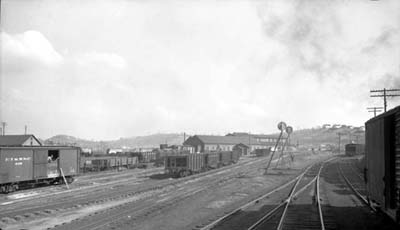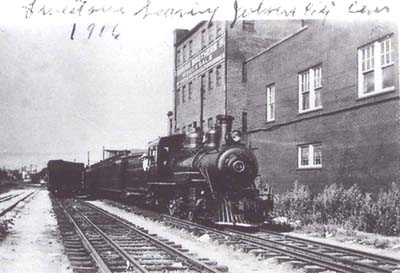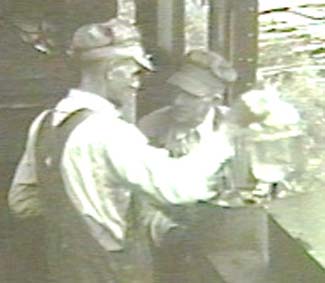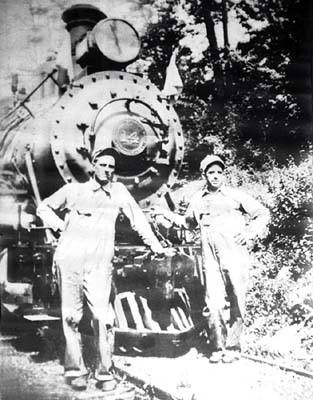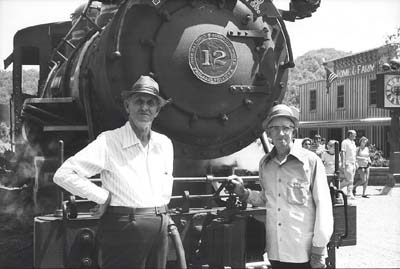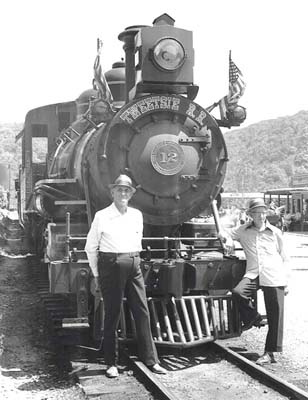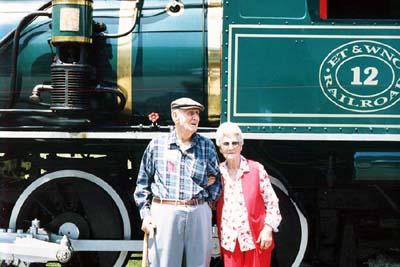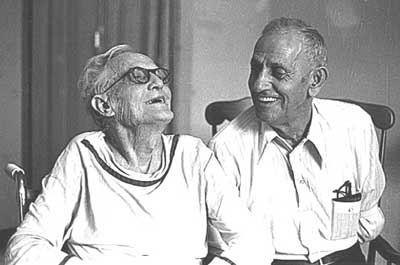Big John Lewis with his oilcan, Charlie "Monk" Bayless, unknown, Brownie Allison, and Brownie's baby brother Floyd Allison. Engine 10, late 1930's.
Brownie Allison's dad, Francis M. "Cap" Allison was the Superintendent of the railroad for many years. Brownie was 8 years old in the summer of 1906, when the shop on Legion Street was being built. He told me several times that he made his first day's pay on the railroad that summer. His father came home for lunch and said that the man who was firing the steam-powered concrete mixer had got mad and quit because he had to carry his coal about twenty yards to the boiler. Brownie told him that he could do the job. Cap told him that he was too little to fire the mixer but he piped up and said "WELL I HAVE BEEN!". He had been down hanging around the construction job and fired the mixer while the concrete was mixed to pour the pits in the shop, which still stands today. That was his first day on the railroad.
His dad worked him off and on in the engine crew pool as a fireman from the time he was twelve. When Brownie was in his junior year at Science Hill High School, Cap ran out of men to run the trains. He came to the school to get Brownie to run the yard between Johnson City and Elizabethton on the big yard engine Number 7. Brownie, who was just a little guy when he was full grown, worried all the way to the shop about having to run the big 7, as it was hard to handle and even the best engineers could not handle the moves on her without putting a monkey wrench on the reverse quadrant. The 7 was so stout when a man unlatched the bar to go forward or reverse, the power of the steam would run the bar all the way to one end or the other of the quadrant, and more than once broke an engineer's forearm doing it. The only man they had that could handle the 7 was Big John Lewis. He was the biggest, strongest man in a family filled with big strong men. He and four of his five brothers worked on the narrow gauge, and their dad WIlliam "Uncle Bill" Lewis was on the crew that dug the first tunnel in Doe River Gorge, and stayed with the railroad until he was 82. Well, Brownie got to the shop and headed for the big 7. At the same time, Big John was lumbering down the ready track headed to his regular engine on the Cranberry Local, the new Number 12 (the engine now at Tweetsie Railroad). He was ahead of Brownie, and stopped at the gangway of the big 7 and sat his great big dinner bucket up on the apron, turned around to little 16-year old Brownie and nodded over at the 12 and grunted. Uncle John never did have a lot to say but could offer up a commanding grunt, even in my day. He took the hard job and let Brownie go to Cranberry and back on the 12, a much easier job. That was Brownie's first day as locomotive engineer. He always talked about how much he appreciated Uncle John swapping out with him that day. That would have been in 1917.
Look at the picture of Uncle John and Brownie together and you can see the difference. Monk Bayless was a big guy, and Uncle John makes him look downright scrawny. You can see the size of his forearms and those huge hands, which looked like a big wrestler even when he was an old man. Then look at little Brownie with his baby brother Floyd. His cousin George told me that Floyd was a real flashy guy, drove an REO automobile, had nice clothes and alway had a bunch of women after him. One of them gave him a bad disease that wrecked his body and mind and he died quite young. A reputed part-time resident of Johnson City in the 1920s, Al Capone, died of the same disease. As far as I know this was the only picture in Mr. Crumley's stuff that showed Floyd.
|
